WHAT HAS BEEN WILL BE AGAIN
2020-21 Do Good Fund Artist-in-Residence project, made with additional grants by The Magnum Foundation, The Aftermath Project, and Alabama State Council on the Arts, and support from Columbus State University, Wiregrass Museum of Art, Coleman Center for the Arts, and National Endowment for the Arts.
From Indigenous genocide to slavery and secession, and from the fight for civil rights to the championing of MAGA ideology, the national history written on, in, and by the people and landscapes of Alabama reveal problematic patterns at the nexus of our larger American identity.
Now in a critical moment of pandemic, protest, and political polarization, What Has Been Will Be Again has led me across more than 25,000 miles and into each of Alabama's 67 counties to survey my home state's cultural and physical landscape.
Social isolation is both a phrase and experience that has defined the recent past, and What Has Been Will Be Again expressly evokes the alienation that has characterized the moment. Yet the work features sites for which isolation and violence is nothing new––places where extracted labor and environmental exploitation have exacted heavy tolls. Such isolation is less accidental or temporal, and more a product of decades of willful neglect by a mainstream America only now starting to visualize what––and who––has been pushed out of our collective frame of vision.
By tracing historic colonial routes including the Old Federal Road and Hernando de Soto’s 1540 expedition and traveling the Trail of Tears and final passage of the slave ship, Clotilda, What Has Been Will Be Again uses a Southern Gothic sensibility to visualize the very real social isolation that has had tangible consequences on the individuals and communities photographed, while simultaneously revealing connections between Alabama’s centuries-long past, its present-day issues, and the perpetuated use of segregation and sequestration in service of the white supremacist myths of American exceptionalism.
See the project reading list here.
.....................................
From Indigenous genocide to slavery and secession, and from the fight for civil rights to the championing of MAGA ideology, the national history written on, in, and by the people and landscapes of Alabama reveal problematic patterns at the nexus of our larger American identity.
Now in a critical moment of pandemic, protest, and political polarization, What Has Been Will Be Again has led me across more than 25,000 miles and into each of Alabama's 67 counties to survey my home state's cultural and physical landscape.
Social isolation is both a phrase and experience that has defined the recent past, and What Has Been Will Be Again expressly evokes the alienation that has characterized the moment. Yet the work features sites for which isolation and violence is nothing new––places where extracted labor and environmental exploitation have exacted heavy tolls. Such isolation is less accidental or temporal, and more a product of decades of willful neglect by a mainstream America only now starting to visualize what––and who––has been pushed out of our collective frame of vision.
By tracing historic colonial routes including the Old Federal Road and Hernando de Soto’s 1540 expedition and traveling the Trail of Tears and final passage of the slave ship, Clotilda, What Has Been Will Be Again uses a Southern Gothic sensibility to visualize the very real social isolation that has had tangible consequences on the individuals and communities photographed, while simultaneously revealing connections between Alabama’s centuries-long past, its present-day issues, and the perpetuated use of segregation and sequestration in service of the white supremacist myths of American exceptionalism.
See the project reading list here.
.....................................
Select publications:
Select exhibitions:
Awards:
.....................................
Select images:
![Spring Hill, Barbour County, Ala. Michael Farmer, 57, fashions a scarecrow next to his garden on Election Day. 2020. // Michael Farmer’s family has lived in Spring Hill for generations, where the predominantly Black community has faced a history of racial violence and voter disenfranchisement. On November 3, 1874 a white mob attacked the Spring Hill polling station, destroying the ballot box, burning the ballots, and murdering the election supervisor’s son. Farmer is a lifelong Democrat and military veteran who served two tours overseas in Operation Desert Storm and Operation Iraqi Freedom. When asked what he hoped might come from the 2020 presidential election, Farmer said, “I hope the young folks might think about what their ancestors came through to get where we are.”]()
![Dallas County, Ala. Perine Well at Old Cahawba. 2020. // The area now known as Old Cahawba was first occupied by large populations of Paleoindians; then from 1000-1500 CE the Mississippian period brought agriculture and mound builders. Spanish conquistadors were welcomed to a walled city with palisades, yet the Afro-Eurasian diseases the explorers brought with them killed thousands of indigenous people in the 16th and 17th centuries. The remaining native peoples were killed or forced to move by an even greater influx of Europeans. By the early nineteenth century, the dirt from the ancient mounds at Cahawba was used to build railroad beds, and the town briefly served as the state capital of Alabama. At the time it was dug in the 1850s, the Perine Well, at seven hundred to nine hundred feet deep, was the second-largest known well in the world, feeding cool water through a system of pipes to “air condition” a twenty-six-room brick mansion. Cahawba became a ghost town shortly after the Civil War, largely due to recurring floods. By the late 1800s, the town site was purchased for $500 and its buildings demolished.]()
![Childersburg, Talladega County, Ala. Sunshine turns soil in the Commons Community Workshop garden. 2020. // As a response to recent national division and the COVID-19 outbreak, Sunshine and her husband Rusty recently bought a home in Childersburg and created The Commons Community Workshop. Through their Fearless Communities Initiative they are building a community garden in a donated downtown lot, hosting trade days, and fostering relationships with their neighbors as a means of “celebrating solidarity and strength.” The couple invited me to find them on Facebook where Sunny posts Initiative announcements, vocalizes her opposition to mask wearing and vaccines, and shares her beliefs about global child sex trafficking networks, the threat of Marxism, and the coming of the end times.]()
![Birmingham, Jefferson County, Ala. Tuxedo Junction, Ensley neighborhood. 2020.]()
![Tuscaloosa, Tuscaloosa County, Ala. Glitter scattered on ruins of the former Alabama state capitol building. 2020. // Yoholo-Micco, chieftan of the Upper Creek town of Eufala, is said to have addressed the Alabama Legislature in 1836 at the state capital in Tuscaloosa before departing the ancestral Muscogee homelands on the Trail of Tears. Yoholo-Micco’s actual words are unknown, but the white, colonial writers of history have painted the Creek leader as one who accepted indigenous removal with an air of romantic resignation, going so far as to contrive his final words in a way to whitewash the genocide that had taken place over 300+ years’ time. Yoholo-Micco’s apocryphal address – which has been reproduced in Alabama history books and grade school curriculum for decades – reads, in part: “I come here, brothers, to see the great house of Alabama and the men who make laws and say farewell in brotherly kindness before I go to the far west, where my people are now going. In time gone by I have thought that the white men wanted to bring burden and ache of heart among my people in driving them from their homes and yoking them with laws they do not understand. But I have now become satisfied that they are not unfriendly toward us, but that they wish us well.”]()
![Sumter County, Ala. Tin man target. 2021. // In 1978, Chemical Waste Management, a subsidiary of Waste Management Inc., purchased a landfill permit for a 300-acre tract of land in the center of Sumter County, one of the country’s most impoverished regions. More than 65% of Sumter County residents are Black and over 90% of residents near the landfill are Black. Since acquiring the landfill, Waste Management Inc. has expanded the site to 2,700 acres across what was once lush farmland, creating the largest hazardous waste landfill in the United States, and possibly the world. Nearly 40% of the toxic waste disposed of nationwide between 1984-87 under the federal Superfund removal program ended up at the landfill. The landfill also sits directly over the Eutaw Aquifer, which supplies water to a large part of Alabama. One of the original owners, James Parsons, is the son in law of former governor George Wallace. The political connections enabled the company to obtain the necessary permits from the Health Department to operate the dump.]()
![Birmingham, Jefferson County, Ala. Mural depicting the murder of George Floyd, Ensley neighborhood. 2020. // According to a 2020 investigation by Northeastern University, 123 Black people were killed by white police officers in Jefferson County between 1932–1968. In only two cases were officers charged for the killings. For 26 of the 36 years chronicled, the commissioner of public safety in Birmingham was Eugene “Bull” Connor, who infamously turned fire hoses and attack dogs on civil rights protesters in 1963.]()
![Sumter County, Ala. Near the site of Fort Tombecbe, an 18th cen. stockade built on Choctaw lands. 2021. // Originally constructed by French colonialists in 1736 on the border of French Louisiana, Fort Tombecbe was positioned to hold back British intrusion into the area and served as a major French outpost and trade depot among the Choctaw. Control passed to the British in 1763, who renamed it Fort York but abandoned the site. In 1793 Spain acquired the site from the Choctaw in the treaty of Boufouka, which ceded about 10,000 acres of Choctaw land to the Spanish.]()
![Talladega County, Ala. Ruins of Mt. Ida Plantation. 2020. // Destroyed by fire in 1956, the 1840 Greek Revival-style antebellum mansion was built for Walker Reynolds, who owned some 13,000 acres of land and held several hundred enslaved persons. The plantation–located near the site of Abihka, once one of four mother towns of the Muscogee Creek confederacy–was reportedly a location for the 1915 white-supremacist film, "Birth of a Nation."]()
![Carrolton, Pickens County, Ala. Civil War Monument. 2020.]()
![Jacksonville, Calhoun County, Ala. Taxidermy tableaux with Confederate battle flag. 2020.]()
![Irondale, Jefferson County, Ala. Blake. 2020.]()
![Fort Deposit, Lowndes County, Ala. Ben. 2021.]()
![Uniontown, Perry County, Ala. 2020. // In 2009, the TVA Kingston Fossil Plant coal ash dike ruptured and released 5.4 million cubic yards of coal ash into the Emory River in Tennessee. As part of the clean-up process the Arrowhead landfill in Uniontown received the spilled coal ash, taking on more than 4 million tons of coal ash between July 2009 and December 2010. The landfill is located less than 5 miles from Uniontown, and the nearest residence is approximately 300 feet away from the site.]()
![Evergreen, Conecuh County, Ala. 2021.]()
![Repton, Conecuh County, Ala. Dinosaur Adventure Land. 2021. // Dinosaur Adventure Land is a Christian campground, science center, and adventure park dedicated to anti-evolution teaching. Its founder and leader, Christian fundamentalist Kent E. Hovind, takes a literalist interpretation of the Genesis creation narrative and teaches discredited Young Earth Creationist theories. Before building DAL in Alabama, Hovind operated a similar theme park in Pensacola and served a ten-year sentence in federal prison for failure to pay taxes, obstructing federal agents, and structuring cash transactions.]()
![Evergreen, Conecuh County, Ala. Antoine. 2021.]()
![Salem, Lee County, Ala. Mural glorifying exploitative Jim Crow-era practice of sharecropping. 2021.]()
![Monroe County, Ala. Along a spur of the Old Federal Road, near the site of Claiborne. 2021. // Located along the Alabama River in present-day Monroe County, Claiborne was a once flourishing center of political and economic life in territorial Alabama. Serving as a base of operations in during the Creek War in the early 19th century, Claiborne was also home to Alabama’s first Eli Whitney-designed cotton gin. Today, the Georgia-Pacific Alabama River Cellulose paper mill is located just upriver of the old town site. The mill produces specialty fluff and market pulp for consumer products that are found in more than 65% of U.S. households. While in process of switching to sustainable and renewable energy sources and investing in conservation projects, Georgia-Pacific self-reported that the Alabama River Cellulose paper mill released more than 120k pounds of reproductive toxins into the Alabama River in 2015.]()
![Sumter County, Ala. 2021. // Legend has it that sometime around 1868, a handsome man rode into the town of Livingston on a white horse. Immediately charming the townspeople, Stephen Renfroe would rise to prominence as a leading figure among disgruntled whites against their “carpetbagging Yankee oppressors.” As Sumter County Sheriff and leader of the local Ku Klux Klan, Renfroe was known more for breaking the law than keeping it—orchestrating the kidnappings and murders of several local Republicans, committing arson, and embezzling money. In 1880, he was charged with assault with intent to murder and other crimes, but was acquitted. Following several more arrests, escapes from jail, and living as an outlaw and drifter for years, Renfroe returned to Sumter County, where he threatened to blackmail his former Klan associates. A mob formed in response, seizing Renfroe and marching him to the banks of the Sucarnoochee River, where they hanged him from a chinaberry tree.]()
![Pike County, Ala. 2021.]()
![Stewart, Hale County, Ala. Christenberry Home Place. 2021.]()
![Carbon Hill, Walker County, Ala. Wanda and Jerry unload Trump-themed fireworks. 2020. // “He’s my president–I just love him,” Wanda said as she went to kiss a box of “WE THE PEOPLE D.J. TRUMP” brand fireworks that guarantees “45 EPIC SHOTS.” Originally established as a mining and railroad community in 1863, Carbon Hill’s founders nicknamed it “The Village of Love and Luck.” However, just two weeks prior a group of 200 white coal miners on strike from the Carbon Hill Coal and Coke Co. devolved into a violent mob after hearing rumor their strike would lead to layoffs. Afraid their jobs would be given to Black citizens, the mob terrorized the town, shooting Black residents and driving them from their homes. More than a century and a half later in 2020, Carbon Hill mayor Mark Chambers aimed racist remarks at the Black Lives Matter movement in a Facebook comment that read in part, “When you put Black lives before all lives they can kiss my ass.” Three days after publishing the comment Chambers deleted his remarks and resigned. As of 2011, there were approximately 30 churches in Carbon Hill for a population of just over 2,000 residents, of which 89% are white and 25% live below the poverty line. More than 83% of local residents voted for Donald Trump in the 2020 election.]()
![Macon County, Ala. Near the site of Fort Bainbridge. 2021. // Located near several important Muscogee (Creek) towns along the Old Federal Road, Fort Bainbridge was constructed in 1814 to guard the U.S. Army’s supply route into Creek territory. After the Indian Removal Act of 1830, local white landowners established a plantation using extensive forced labor of enslaved people. Between 1932 and 1972, investigators from United States Public Health Service and the Centers for Disease Control and Prevention enrolled a total of 600 African-American men from Macon County in “The Tuskegee Study of Untreated Syphilis in the Negro Male.” Participants were not informed of the nature of the experiment and left untreated for 40 years. As a result, 28 patients died directly from syphilis, 100 died from complications related to syphilis, 40 of the patients' wives were infected with syphilis, and 19 children were born with congenital syphilis.]()
![Gadsden, Etowah County, Ala. Locust Street bridge, site of the lynching of Bunk Richardson. 2020. // In July 1905, four Black men–Jack Hunter, Vance Garner, Will Johnson, and Bunk Richardson–were arrested for the murder of a white woman in Gadsden. Although Richardson was innocent, a mob forced its way into the Etowah County jail where he was being held, beat him, and lynched him from the train trestle over the Coosa River. No one was ever held accountable for the lynching.]()
![Birmingham, Jefferson County, Ala. Eastlake neighborhood. 2020.]() .....................................
.....................................
Photographic Meditations on Marginalization in a Pandemic Year
Catherine Wilkins, Ph.D.
Study the South, December 8, 2021
Social isolation is both a phrase and an experience that has defined the past year in the wake of the global COVID-19 pandemic. The images in photographer Jared Ragland’s ongoing body of work, What Has Been Will Be Again, expressly evoke the loneliness that has characterized this period; solitary subjects inhabit these frames, and many images in the series are devoid of people altogether. One can imagine the photographer, alone, navigating deserted landscapes with only a camera as his companion, documenting the recent ravaging of the public sphere. Yet, while the theme is certainly au courant, What Has Been... features subjects for whom social isolation is nothing new. This body of photographs, instead, makes a case for a long history of isolation and alienation in the artist’s home state – one that has exacted a costly human toll.
In this photographic survey that began in Fall 2020, Ragland has been working his way across Alabama following historical routes from America’s colonial era, documenting individuals and communities whose existence has been practically defined by economic and geographic isolation. The series features landscapes shot in tiny rural towns plagued by generational poverty and the exploitation of the environment, as evidenced by dispossessed storefronts, homes, and infrastructure. Ragland also makes visible the often-overlooked inhabitants of these neglected places by producing powerful portraits of lone individuals. While we can provide little assistance or solace Ragland seems to insist that the simple act of bearing witness to the loneliness is important. As the viewer travels alongside the photographer, moving through his weeks on the road and simultaneously through deep time, a creeping realization sets in – that these subjects and spaces have been deliberately left to their own devices, to deteriorate or decay. Their isolation seems less accidental or temporal, and more a product of decades of willful neglect by a mainstream America only now starting to visualize what – and who – has been pushed out of our collective frame of vision.
The great paradox of What Has Been... is that it visualizes the very real social isolation that has had tangible consequences on the individuals and communities photographed, while simultaneously revealing connections across space, place, people, and time. In images subtly subversive to the overall aesthetic of loneliness, tree branches organically entwine, messages are exchanged via layers of marks on the landscape, power lines run alongside roads that stretch out toward the horizon. More overtly, by tying together events in Alabama’s centuries-long past with present-day issues, Ragland insists that it is impossible to view our current period outside of history. The confluence of the COVID-19 pandemic, Black Lives Matter movement, and seditious domestic terrorism marks our times as significant, but Ragland’s body of work shows that the isolation, socioeconomic inequalities, racism, and marginalization we’ve witnessed is not unprecedented.
What Has Been... speaks specifically to the mood of our moment while also asserting the timelessness of its themes of isolation by illustrating the perpetuated use of segregation and sequestration in service of the white supremacist myths of American individualism and exceptionalism. As viewers prepare to emerge from quarantine and rejoin “post-pandemic” society, Ragland asks us to bear witness to the people and places who cannot so easily shrug off the mantle of social isolation.
.....................................
What Has Been Will Be Again: An Expedition Through Alabama’s Troubled Legacies
Alexis Okeowo
VQR, Spring 2021
Not too long ago, the sky down South was dimming, turning down from the lemony warmth of the day, deepening into gold and rose and then lavender and gray, poking through the thick moss of the weeping willow trees all around the neighborhood where I was staying. I was in my hometown of Montgomery, Alabama, mostly there for work but partly there, as always, for a chance to gather myself. Every evening felt the same—lazy light, heavy air, a languorousness that never fails to feel decadent to someone who is not a resident. For some of those people—the ones, like myself, who grew up in Alabama and then moved elsewhere—we are doomed to forever being of two minds about our home state. The ugly often appears to be its most dominant feature, the history and present of willful exclusion and oppression; but the tenderness, the land and people that make so many choose to call it home, is right there alongside it.
In a non-plague year, I go to Alabama more than anywhere else—at least five or six times a year—which I explain to people by saying that I started writing a book about the state almost three years ago, but the truth is I traveled nearly as often even before that. It went like this: I would get on a plane from New York to Atlanta, then wait around the Atlanta airport for a while before boarding a much smaller plane to Montgomery; and then, after landing, meet my dad at baggage claim to drive the half hour to my parents’ house. Along the way, we’re greeted by everyone from an airport custodian to a guy in camouflage who’s likely carrying. The same thing happens when I’m running around town and encountering people: We greet, talk, try to find out who we are, what matters to us—a regional custom of connecting to each other.
In these photos, photographer Jared Ragland returns home to Alabama in order to, as he said, “critically explore Southern identity, marginalized communities, and the history of place”—big ideas that feel smaller when you start meeting people on the road. The state becomes increasingly intimate and hard to define, starting with stories from the southern tip of Alabama, a place of both Indian reservations and vividly-remembered Civil War battles, to its northern reaches, where working-class white folks and Latino immigrants live side by side. Ragland takes another look at the state’s psychic and geographical landscape in a time of crisis: health-wise, politically, ecologically, and economically.
Part of his visual journey had him follow the Spanish explorer and colonialist Hernando de Soto’s trail through Alabama in 1540, as a way to document the ghosts and people that now reside on its most holy lands: sites of American Indian removal, battlegrounds of the civil rights movement, old coal mines where one of his ancestors worked, places of ongoing economic and environmental strife. The land is haunted, true, but the people living and working on it are determined to forge their own paths.
There are the things we all tend to know about Alabama. As Ragland told me, “From Native American genocide to slavery and secession, and from the fight for civil rights to the championing of Trumpist ideology, Alabama has stood at the nexus of American identity.” But there are also the things that only some of us know, and those truths about the tenderness of our home will take time to convince others of—through photos, writing, and however else we can make our experiences known. Because, as Ragland says, “it’s a complicated place, simultaneously beautiful and horrifying—full of instances where the abject and beautiful mysteriously intersect.” And importantly, it’s home, to Ragland, me, and a whole host of motley people—and that in itself makes it worthy of exploration, again and again.
.....................................
- with Catherine Wilkins, PhD., “What Has Been Will Be Again: Photographic Meditations on Social Isolation in Alabama,” Study the South. Decemeber 8, 2021.
- with Alexis Okeowo, “What Has Been Will Be Again,” VQR. Volume 97, Number 1, Spring 2021.
- Daniel George, “Jared Ragland: What Has Been Will Be Again,” Lenscratch. September 10, 2021.
- Roslyn Juli and Grace Tyson, eds., Goldenrod Editions Issue 02, 2021.
Select exhibitions:
- The Do Good Fund, Columbus, GA, May 4–June 16, 2022
- The Montgomery Museum of Fine Arts, Montgomery, AL, June 18–Sept. 11, 2022
- Auburn University at Montgomery, Montgomery, AL, October. 2022 (upcoming)
Awards:
- Finalist, 2022 Aftermath Project Grant
- 2022 Social Documentary Network Reviewers Choice Award
- TOP 50, 2021 Photolucida Critical Mass
- Shortlist, 2021 Royal Photographic Society International Photography Exhibition 163
- Finalist, 2021 The Independent Photographer Open Call
- Finalist, 2021 Passepartout Photo Prize
- 2020 Magnum Foundation US Dispatches Grant
.....................................
Select images:
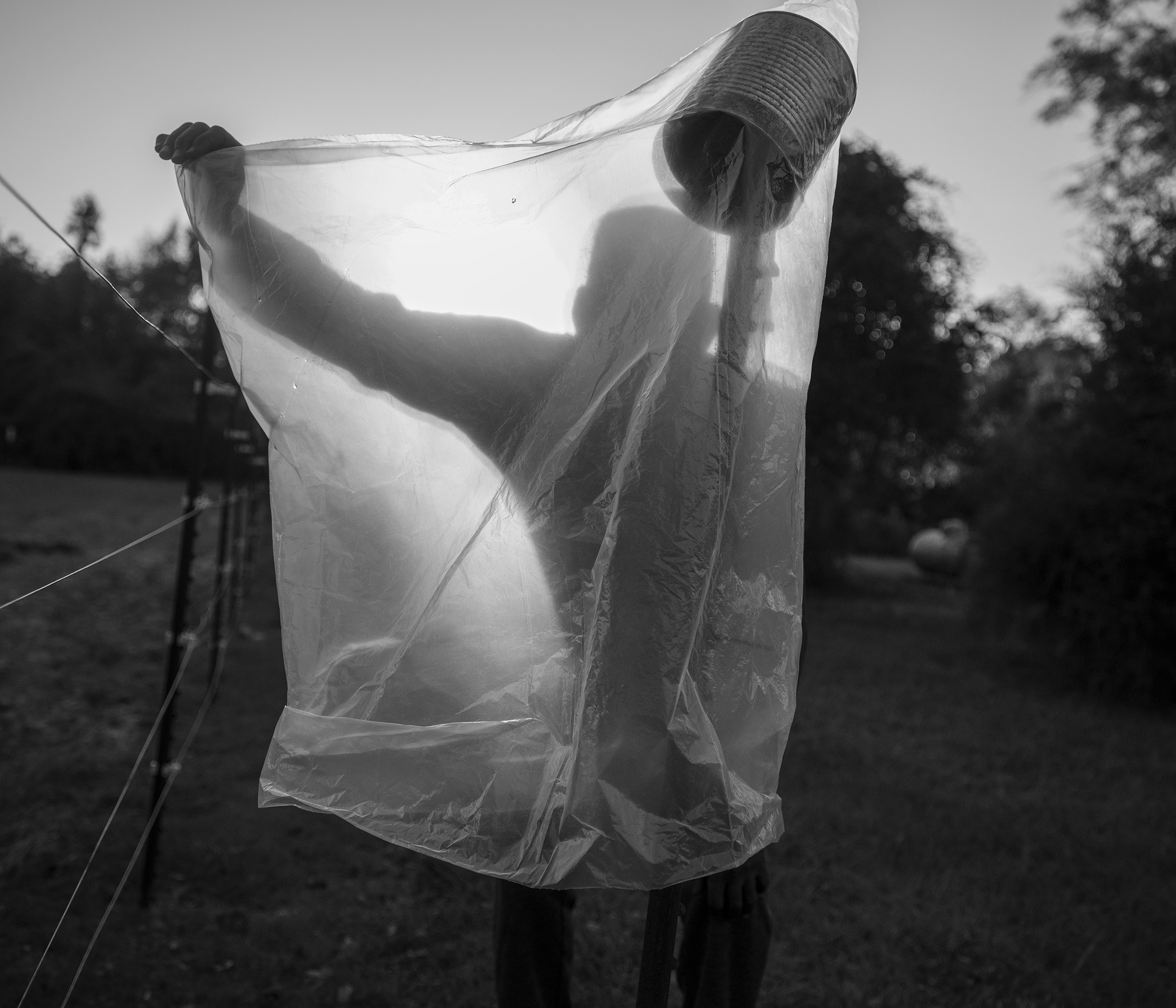
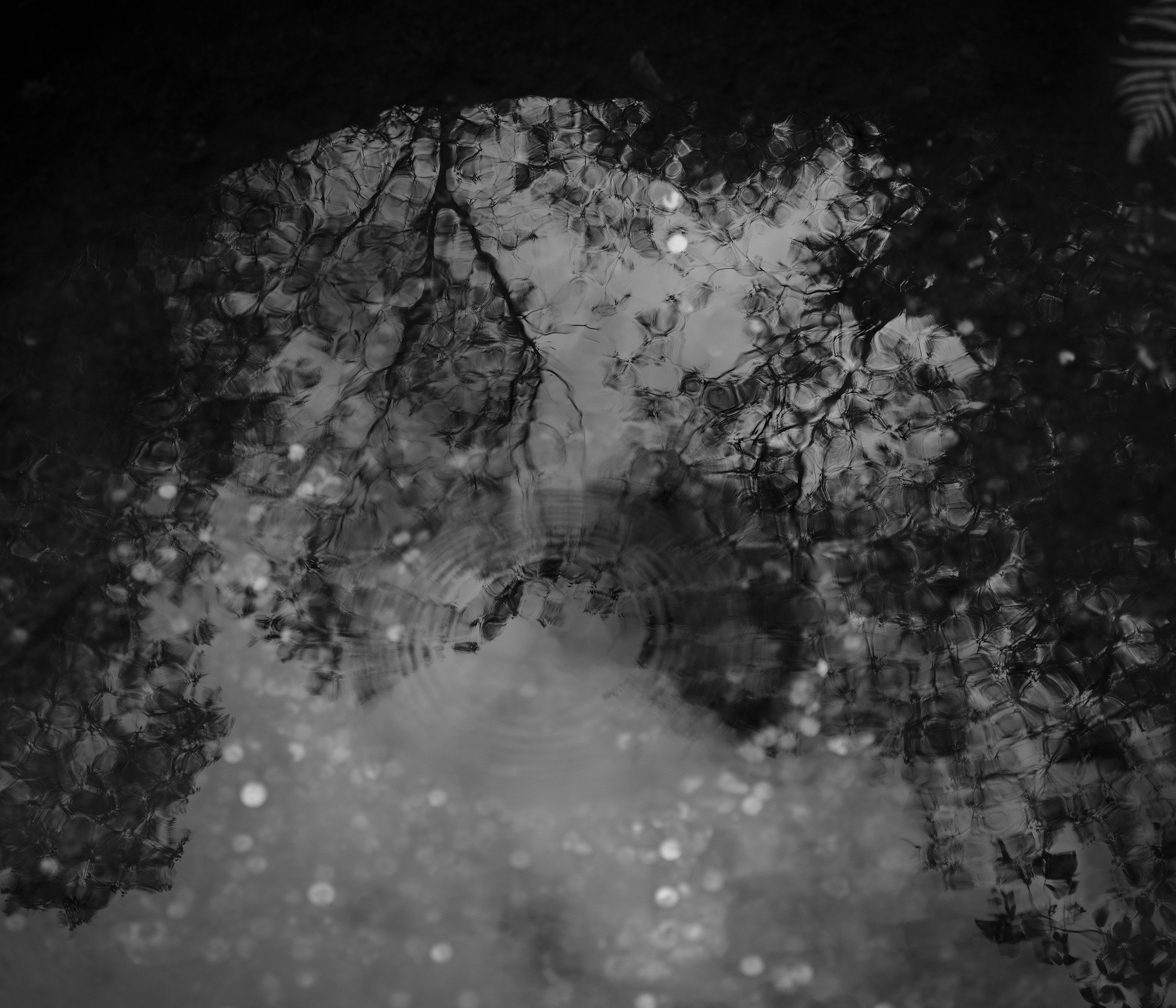





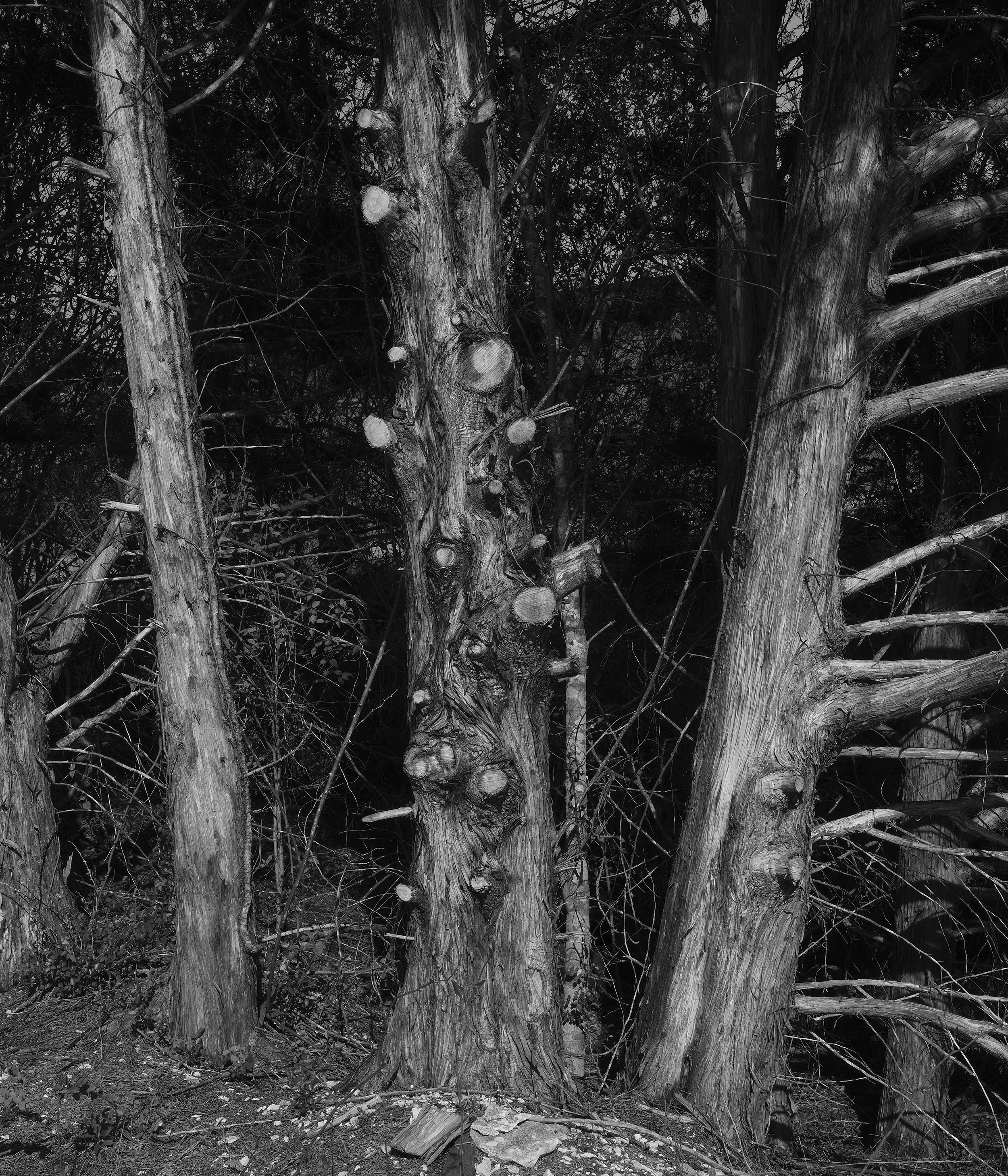

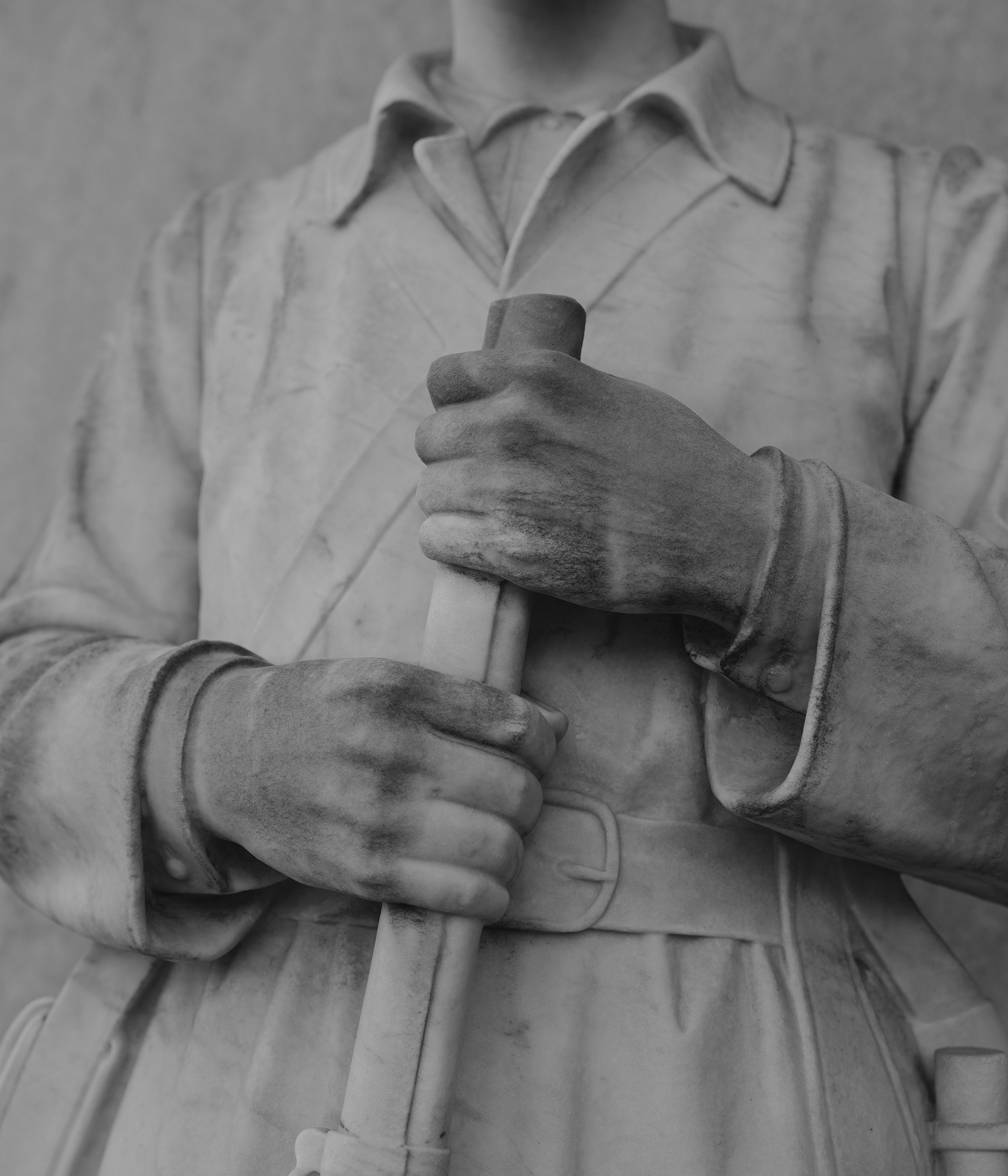

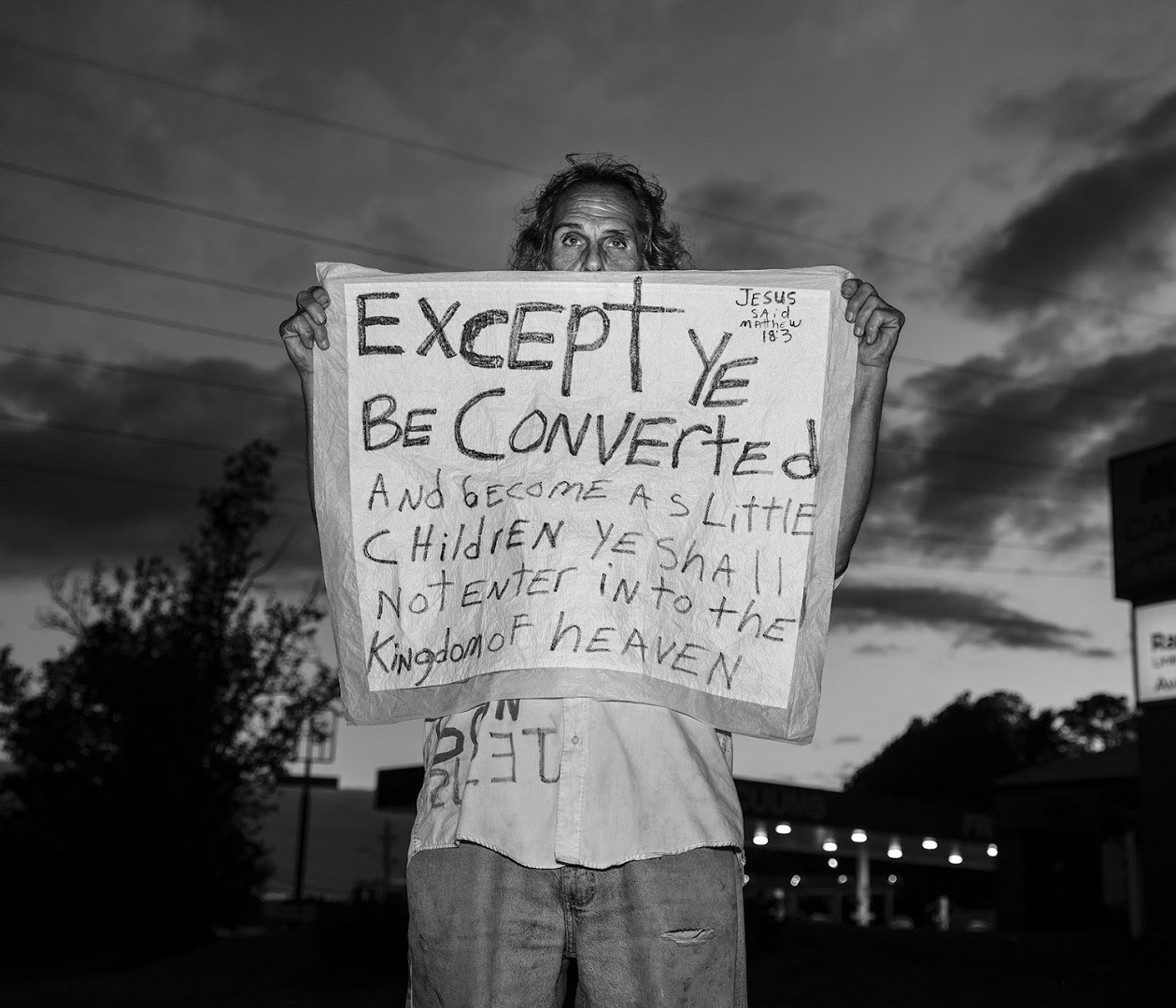






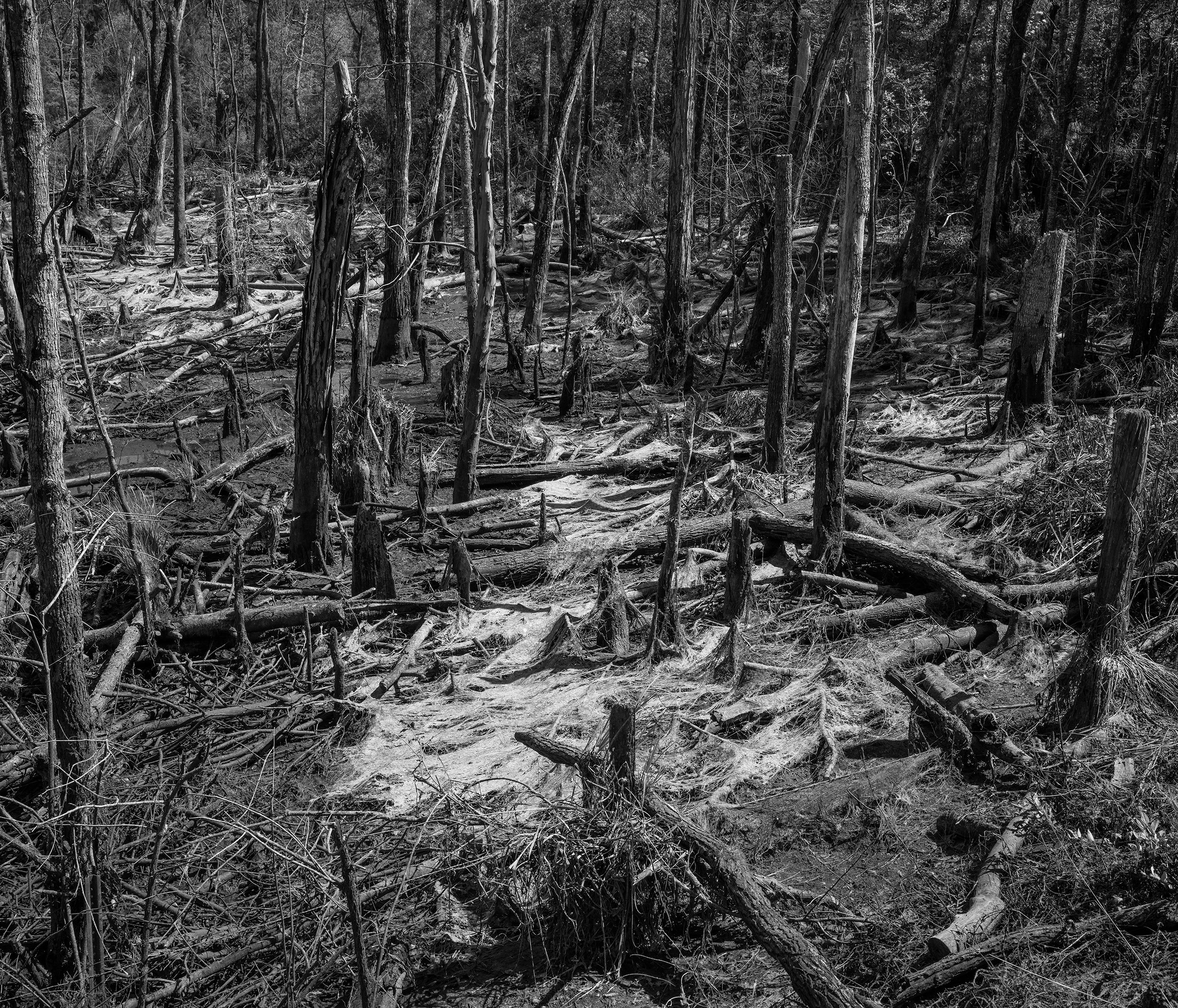
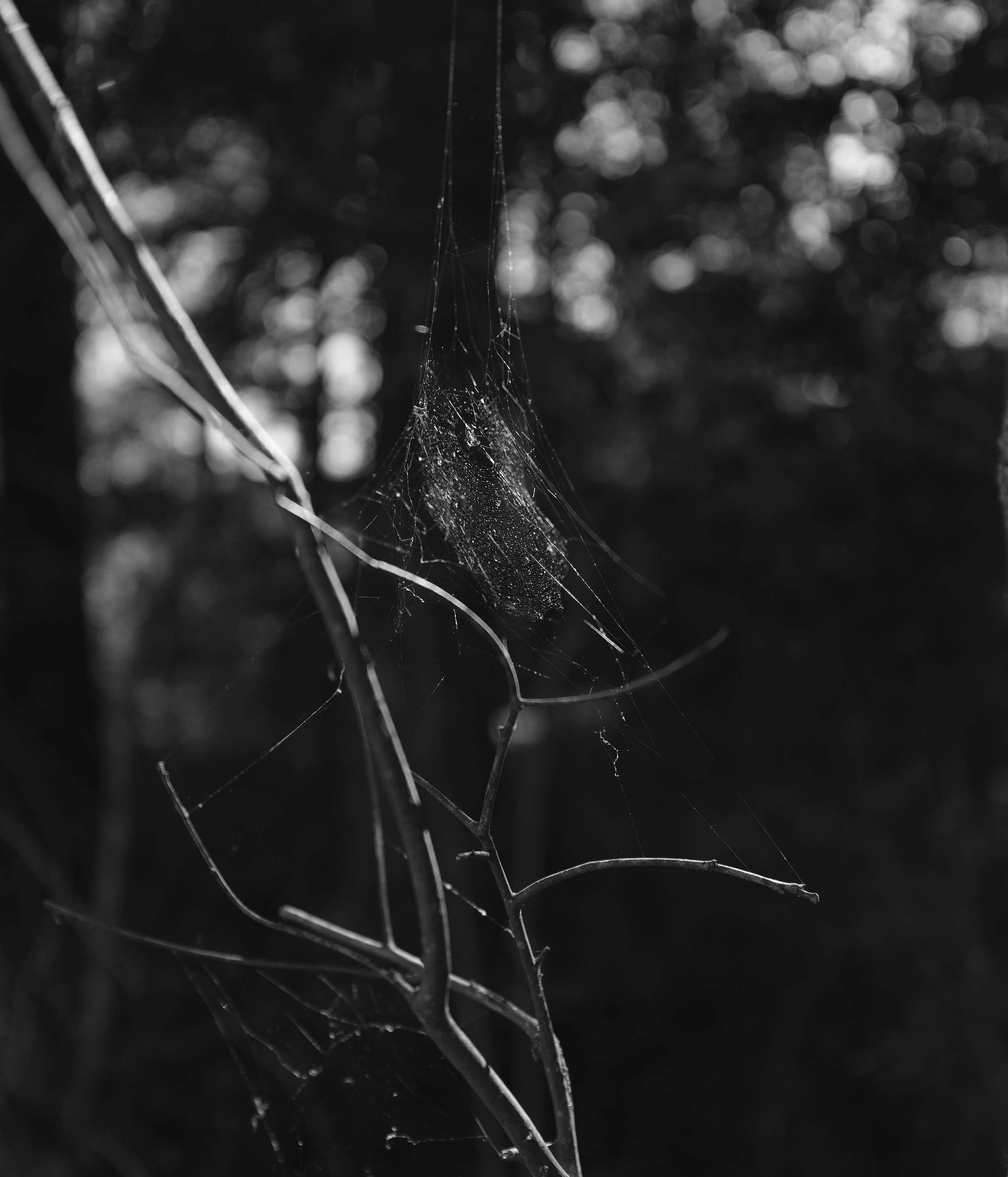
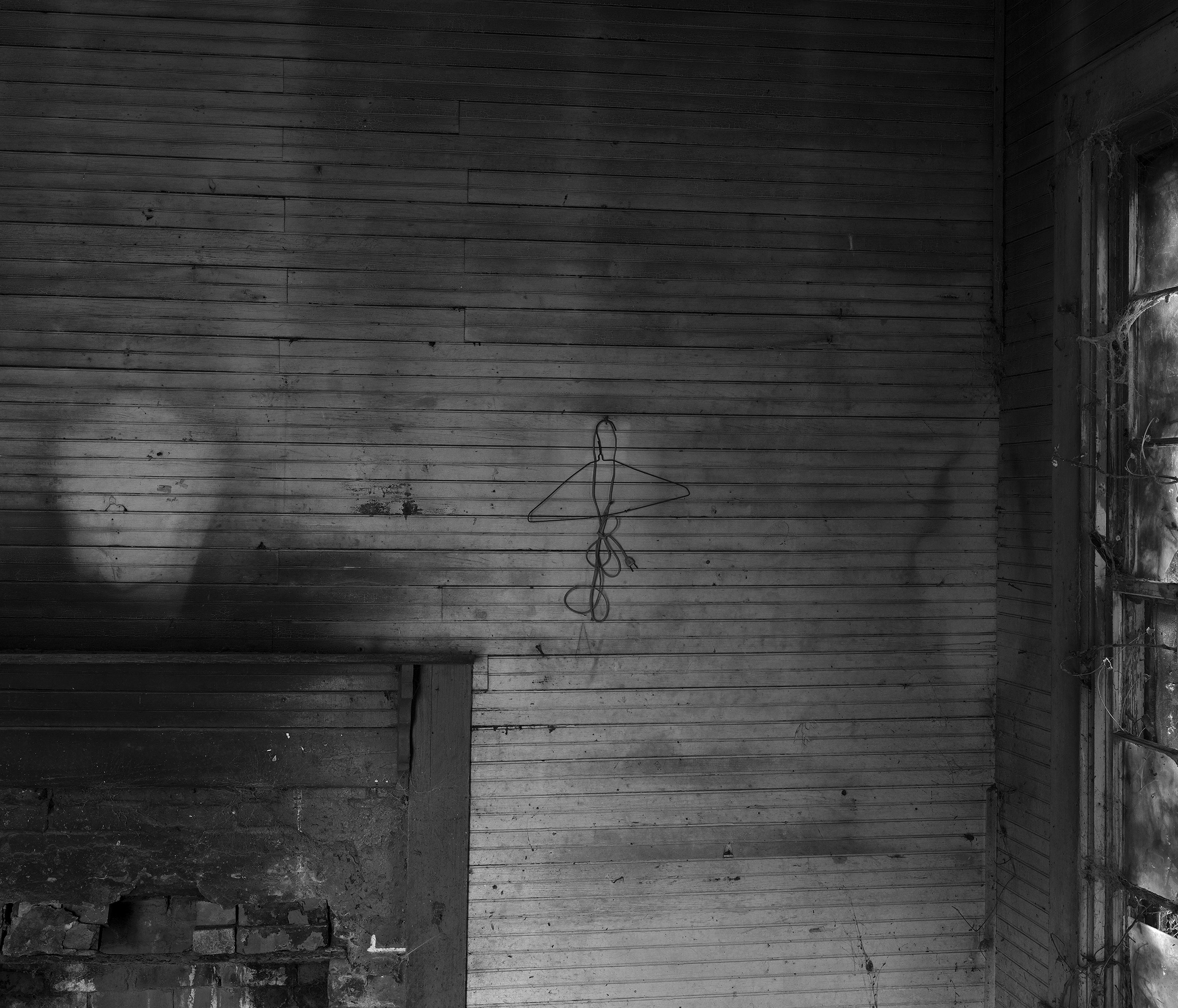




Photographic Meditations on Marginalization in a Pandemic Year
Catherine Wilkins, Ph.D.
Study the South, December 8, 2021
Social isolation is both a phrase and an experience that has defined the past year in the wake of the global COVID-19 pandemic. The images in photographer Jared Ragland’s ongoing body of work, What Has Been Will Be Again, expressly evoke the loneliness that has characterized this period; solitary subjects inhabit these frames, and many images in the series are devoid of people altogether. One can imagine the photographer, alone, navigating deserted landscapes with only a camera as his companion, documenting the recent ravaging of the public sphere. Yet, while the theme is certainly au courant, What Has Been... features subjects for whom social isolation is nothing new. This body of photographs, instead, makes a case for a long history of isolation and alienation in the artist’s home state – one that has exacted a costly human toll.
In this photographic survey that began in Fall 2020, Ragland has been working his way across Alabama following historical routes from America’s colonial era, documenting individuals and communities whose existence has been practically defined by economic and geographic isolation. The series features landscapes shot in tiny rural towns plagued by generational poverty and the exploitation of the environment, as evidenced by dispossessed storefronts, homes, and infrastructure. Ragland also makes visible the often-overlooked inhabitants of these neglected places by producing powerful portraits of lone individuals. While we can provide little assistance or solace Ragland seems to insist that the simple act of bearing witness to the loneliness is important. As the viewer travels alongside the photographer, moving through his weeks on the road and simultaneously through deep time, a creeping realization sets in – that these subjects and spaces have been deliberately left to their own devices, to deteriorate or decay. Their isolation seems less accidental or temporal, and more a product of decades of willful neglect by a mainstream America only now starting to visualize what – and who – has been pushed out of our collective frame of vision.
The great paradox of What Has Been... is that it visualizes the very real social isolation that has had tangible consequences on the individuals and communities photographed, while simultaneously revealing connections across space, place, people, and time. In images subtly subversive to the overall aesthetic of loneliness, tree branches organically entwine, messages are exchanged via layers of marks on the landscape, power lines run alongside roads that stretch out toward the horizon. More overtly, by tying together events in Alabama’s centuries-long past with present-day issues, Ragland insists that it is impossible to view our current period outside of history. The confluence of the COVID-19 pandemic, Black Lives Matter movement, and seditious domestic terrorism marks our times as significant, but Ragland’s body of work shows that the isolation, socioeconomic inequalities, racism, and marginalization we’ve witnessed is not unprecedented.
What Has Been... speaks specifically to the mood of our moment while also asserting the timelessness of its themes of isolation by illustrating the perpetuated use of segregation and sequestration in service of the white supremacist myths of American individualism and exceptionalism. As viewers prepare to emerge from quarantine and rejoin “post-pandemic” society, Ragland asks us to bear witness to the people and places who cannot so easily shrug off the mantle of social isolation.
.....................................
What Has Been Will Be Again: An Expedition Through Alabama’s Troubled Legacies
Alexis Okeowo
VQR, Spring 2021
Not too long ago, the sky down South was dimming, turning down from the lemony warmth of the day, deepening into gold and rose and then lavender and gray, poking through the thick moss of the weeping willow trees all around the neighborhood where I was staying. I was in my hometown of Montgomery, Alabama, mostly there for work but partly there, as always, for a chance to gather myself. Every evening felt the same—lazy light, heavy air, a languorousness that never fails to feel decadent to someone who is not a resident. For some of those people—the ones, like myself, who grew up in Alabama and then moved elsewhere—we are doomed to forever being of two minds about our home state. The ugly often appears to be its most dominant feature, the history and present of willful exclusion and oppression; but the tenderness, the land and people that make so many choose to call it home, is right there alongside it.
In a non-plague year, I go to Alabama more than anywhere else—at least five or six times a year—which I explain to people by saying that I started writing a book about the state almost three years ago, but the truth is I traveled nearly as often even before that. It went like this: I would get on a plane from New York to Atlanta, then wait around the Atlanta airport for a while before boarding a much smaller plane to Montgomery; and then, after landing, meet my dad at baggage claim to drive the half hour to my parents’ house. Along the way, we’re greeted by everyone from an airport custodian to a guy in camouflage who’s likely carrying. The same thing happens when I’m running around town and encountering people: We greet, talk, try to find out who we are, what matters to us—a regional custom of connecting to each other.
In these photos, photographer Jared Ragland returns home to Alabama in order to, as he said, “critically explore Southern identity, marginalized communities, and the history of place”—big ideas that feel smaller when you start meeting people on the road. The state becomes increasingly intimate and hard to define, starting with stories from the southern tip of Alabama, a place of both Indian reservations and vividly-remembered Civil War battles, to its northern reaches, where working-class white folks and Latino immigrants live side by side. Ragland takes another look at the state’s psychic and geographical landscape in a time of crisis: health-wise, politically, ecologically, and economically.
Part of his visual journey had him follow the Spanish explorer and colonialist Hernando de Soto’s trail through Alabama in 1540, as a way to document the ghosts and people that now reside on its most holy lands: sites of American Indian removal, battlegrounds of the civil rights movement, old coal mines where one of his ancestors worked, places of ongoing economic and environmental strife. The land is haunted, true, but the people living and working on it are determined to forge their own paths.
There are the things we all tend to know about Alabama. As Ragland told me, “From Native American genocide to slavery and secession, and from the fight for civil rights to the championing of Trumpist ideology, Alabama has stood at the nexus of American identity.” But there are also the things that only some of us know, and those truths about the tenderness of our home will take time to convince others of—through photos, writing, and however else we can make our experiences known. Because, as Ragland says, “it’s a complicated place, simultaneously beautiful and horrifying—full of instances where the abject and beautiful mysteriously intersect.” And importantly, it’s home, to Ragland, me, and a whole host of motley people—and that in itself makes it worthy of exploration, again and again.
.....................................